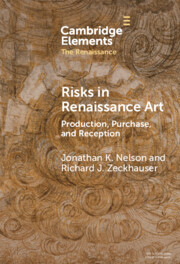Element contents
Risks in Renaissance Art
Published online by Cambridge University Press: 11 January 2024
Summary
- Type
- Element
- Information
- Series: Elements in the RenaissanceOnline ISBN: 9781009402514Publisher: Cambridge University PressPrint publication: 21 March 2024
Bibliography
- 6
- Cited by

